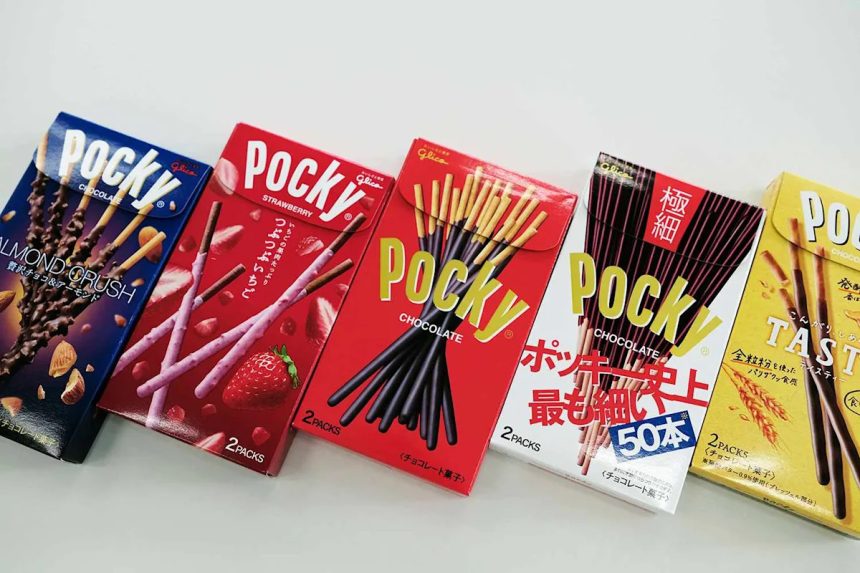NEED TO KNOW
-
Ezaki Glico president Katsuhisa Ezaki was kidnapped from his home in 1984 before escaping three days later
-
The extortionists later claimed to have laced the company’s candies with cyanide, prompting massive recalls of its products, including Pocky, the company’s popular chocolate-covered biscuit sticks
-
Police interviewed more than 100,000 people but never identified the suspects, who used the moniker “Monster with 21 Faces”
An elusive group of extortionists terrorized Japan in the 1980s, kidnapping a candy executive and triggering a nationwide food scare that left millions afraid to open a box of sweets.
Ezaki Glico president Katsuhisa Ezaki was taken from his home near Osaka while preparing for a bath on March 18, 1984. The company, best known globally as the maker of Pocky biscuit sticks, had been a staple in Japan’s snack industry for decades.
According to The New York Times, two masked men forced their way inside, tied up Ezaki’s family and dragged the still-wet executive outside before driving him away.
The kidnappers demanded one billion yen in cash and 100 kilograms of gold bullion. But Ezaki managed to escape three days later by prying open the door of a warehouse where he’d been held. He fled barefoot into the night and alerted police, ending the first chapter of what would become one of Japan’s most sprawling investigations.
Weeks later, Glico received its first letter from a group calling themselves “The Monster with 21 Faces,” claiming responsibility for the kidnapping and warning that the company’s candies had been laced with cyanide. The threat forced Glico to pull every product from store shelves nationwide.
The recall devastated the company financially and led to substantial layoffs, per TIME. Families across Japan stopped buying packaged sweets entirely while police tested thousands of samples.
“Tell me, police fools, do you know who we are?” one letter read, according to The Guardian. “Shall we play with the police?”
The group taunted detectives while issuing new threats and directing officers to attempted ransom drops. According to BBC News, an undercover officer spotted a well-built man with sharp, narrow eyes — quickly nicknamed the “fox-eyed man” — watching a money handoff from a nearby vehicle. Police later reported seeing the same man near another ransom location, per The New York Times, but he escaped both times. Detectives eventually released a composite sketch, but he was never identified.
Want to keep up with the latest crime coverage? Sign up for PEOPLE‘s free True Crime newsletter for breaking crime news, ongoing trial coverage and details of intriguing unsolved cases.
By mid-1984, the kidnappers announced in another letter that they would “forgive Glico,” but the threats didn’t stop — instead, they shifted. According to UPI and later reporting in the Japan Times, Morinaga & Co., Marudai Ham and House Foods soon became targets. In October 1984, the group sent a letter addressed to “mothers of Japan,” claiming that Morinaga candies had been poisoned. Police later recovered more than a dozen Morinaga packages containing lethal amounts of cyanide, UPI reported at the time. Some of the packages were labeled with warnings such as “Danger: Contains Toxins,” and the contaminated boxes were removed before anyone was harmed.
As officers scrambled to stay ahead of the group, the letters continued. One message quoted in the academic journal Critical Inquiry read, “We’ve added some special flavor. The flavor of potassium cyanide is a little bitter.” The group demanded money, mocked detectives and continued to choreograph elaborate drop-off instructions. Officers followed lead after lead, interviewing more than 100,000 people, according to The New York Times, but never located a suspect they could charge.
The pressure on law enforcement grew. On Aug. 7, 1985, Shiga Prefecture Police Superintendent Shoji Yamamoto — whose agency had overseen one of the major failed stakeouts tied to the case — died by self-immolation outside his home, according to UPI. Five days later, newsrooms received what would become the group’s final letter. The message mocked “no-career Yamamoto,” said his death had prompted the group to “give our condolence,” and announced they would “forget about torturing food-making companies” — adding that any further blackmail of candy makers would be the work of copycats, per The News Lens. The note ended, “We are bad guys. That means we’ve got more to do other than bullying companies. It’s fun to lead a bad man’s life.”
After that, the letters stopped. The investigation continued quietly for years, but no one was arrested. By 1994, the statute of limitations on the kidnapping expired, and by 2000, the statute of limitations on the attempted-murder charges tied to the poisoned candy also ran out. According to The New York Times and police summaries cited by BBC News, the case remains officially unsolved.
Read the original article on People









